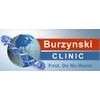Study of Antineoplaston Therapy + Radiation vs. Radiation Only in Diffuse, Intrinsic, Brainstem Glioma (DIPG)
Brain Stem Glioma

About this trial
This is an interventional treatment trial for Brain Stem Glioma focused on measuring Diffuse, intrinsic brain stem glioma, Antineoplaston therapy, Radiation
Eligibility Criteria
Inclusion Criteria:
Subjects with Diffuse, Intrinsic Pontine Glioma as defined by the following criteria are eligible:
- A characteristic MRI appearance, including variable contrast enhancement after gadolinium administration, diffuse T2/FLAIR signal, and involvement of more than 50% of the pons.
- Confirmation of anaplastic glioma (i.e., oligodendroglioma, astrocytoma, oligoastrocytoma) or GBM histology if there is less than 50% involvement of the pons.
- Screening evaluation requires a MRI performed within 14 days prior to the start of ANP therapy. Study subjects must be on a fixed dose of steroids for at least five days prior to the screening MRI. If the steroid dose is changed between the date of imaging and the start of treatment, a new baseline MRI is required. All MRIs must be performed at an accredited radiology center. All MRIs should include at a minimum: T1-weighted images pre/post gadolinium administration, fluid attenuated inversion recovery (FLAIR), and T-2 weighted images.
- Subjects 3-21 years of age must have a clinical history of disease of less than 6 months and at least two of the following clinical findings: cranial nerve deficit, long tract signs (i.e. hemiparesis) and ataxia are eligible. Subjects > 21 years of age do not need to meet these criteria.
- Subjects must be ≥ 3 years of age. RT is not recommended for subjects less than 3 years of age.
- Subjects ≤ 16 years of age with a Lansky performance status of > 40 are eligible. Subjects > 16 years of age with a Karnofsky performance status of > 40 are eligible.
Subjects with organ and marrow function (as defined below) are eligible.
- Hemoglobin ≥ 9 g/dL
- Leukocytes > 2000/mm3
- Absolute neutrophil count >1,000/ mm3
- Serum Na+ ≤ 150 mmol/L
- Serum K+ ≤ 5.5 mmol/L
- Serum creatinine ≤ 1.5 times institutional upper limit
- Platelets >50,000/ mm3
- Total bilirubin < 2.5 mg/dL
- AST (SGOT) / ALT (SGPT) <5 times institutional upper limit
- At the recommended therapeutic dose, the effects of ANP therapy on the developing human fetus are unknown. For this reason, women of child-bearing potential who agree to use adequate contraception (hormonal or barrier method of birth control; abstinence) prior to protocol study entry and for the duration of the protocol study are eligible. Should a woman become pregnant or suspect she is pregnant while participating in this protocol study, she will inform her treating physician immediately.
- Subjects, parents, and/or guardians who are able to understand a written informed consent document, and are willing to sign it, are eligible.
Exclusion Criteria:
- No type of prior therapy, including other investigational agents, is allowable. A prior diagnostic biopsy or surgical shunt for hydrocephalus is permitted.
- Subjects with disseminated disease, multicentric tumors, leptomeningeal disease, or the history of retrotumoral bleeding are not eligible. The screening / baseline MRI includes the spinal cord to rule out leptomeningeal disease.
- Subjects with a known history of ganglioglioma are not eligible.
- Subjects with a current diagnosis or family history of neurofibromatosis I or II are not eligible. - Subjects with a current diagnosis or family history of neurofibromatosis are not eligible.
- Subjects with an uncontrolled intercurrent illness including, but not limited to, ongoing or active infection, uncontrolled hypertension despite maximal medical management (three supine blood pressure measurements ≥ 150/99 taken at least one hour apart) or psychiatric illness/social situations that would limit compliance with protocol study requirements are not eligible.
- Subjects with a history of New York Heart Association Class II congestive heart failure are not eligible.
- Pregnant women are not eligible because the teratogenic and abortifacient effects of ANP therapy in humans are unknown. Because there is an unknown but potential risk for adverse events in nursing infants secondary to the mother receiving ANP therapy, breastfeeding is discontinued if the mother receives ANP therapy.
Sites / Locations
Arms of the Study
Arm 1
Arm 2
Experimental
Experimental
Radiation
Antineoplaston therapy + Radiation
Study subjects receive a single daily radiation fraction of 180cGy, 5 days a week for 6 weeks overall, to a total radiation dose of 5400cGy.
Antineoplaston therapy (Atengenal + Astugenal) by IV infusion every four hours for 104 weeks. Study subjects receive increasing dosages of Atengenal and Astugenal until the maximum tolerated dose is reached. Study subjects also receive a single daily radiation fraction of 180cGy, 5 days a week for 6 weeks overall, to a total radiation dose of 5400cGy.
Outcomes
Primary Outcome Measures
Secondary Outcome Measures
Full Information
1. Study Identification
2. Study Status
3. Sponsor/Collaborators
4. Oversight
5. Study Description
6. Conditions and Keywords
7. Study Design
8. Arms, Groups, and Interventions
10. Eligibility
12. IPD Sharing Statement
Learn more about this trial
